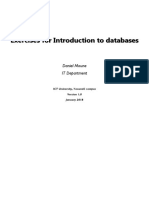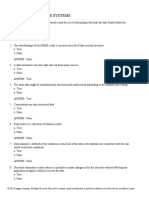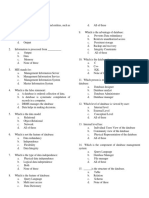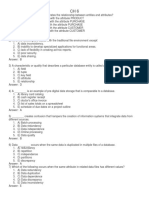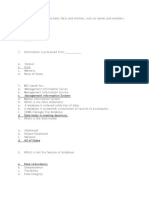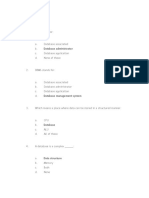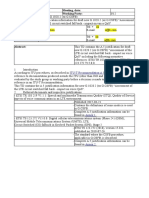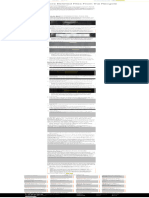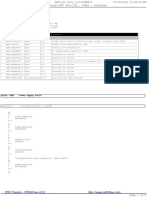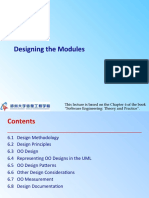100% found this document useful (1 vote)
11K views15 pagesDatabase Basics for Beginners
This document provides an overview of database concepts and systems. It covers topics such as different types of databases (e.g. transactional, desktop), database management systems, data models, relationships between data, and more. The document is comprised of multiple choice questions to test understanding of key database terms and concepts.
Uploaded by
Vettri ArrayCopyright
© Attribution Non-Commercial (BY-NC)
We take content rights seriously. If you suspect this is your content, claim it here.
Available Formats
Download as DOC, PDF, TXT or read online on Scribd
100% found this document useful (1 vote)
11K views15 pagesDatabase Basics for Beginners
This document provides an overview of database concepts and systems. It covers topics such as different types of databases (e.g. transactional, desktop), database management systems, data models, relationships between data, and more. The document is comprised of multiple choice questions to test understanding of key database terms and concepts.
Uploaded by
Vettri ArrayCopyright
© Attribution Non-Commercial (BY-NC)
We take content rights seriously. If you suspect this is your content, claim it here.
Available Formats
Download as DOC, PDF, TXT or read online on Scribd
/ 15




